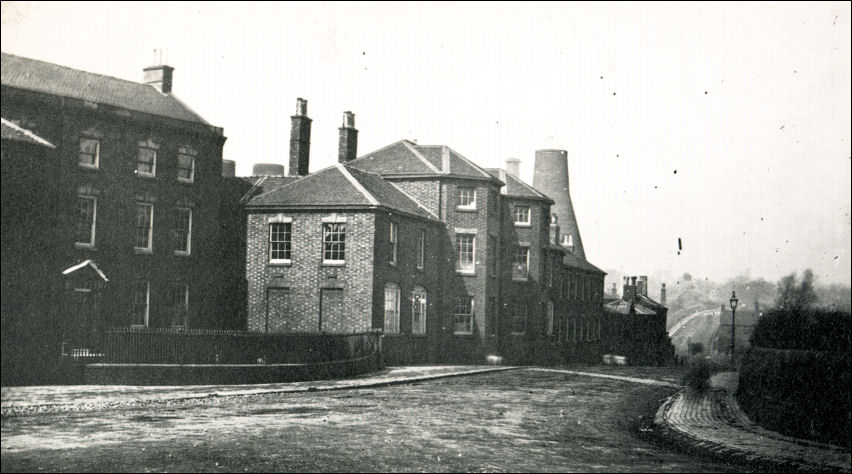![]()
|
|
|
|
|
Stoke-on-Trent - Potworks of the week |
Longport Pottery on Davenport Street, Trubshaw Cross (Longport), Burslem
- around 1888 the works were renamed to the Unicorn Works
NOTE: Not to be confused with the unrelated Unicorn Pottery in Tunstall
|
From |
To |
Occupier |
Comments |
|
1773 |
1793 |
Unknown |
Consisting of three builds by John Brindley, Edward Bourne and Robert Williamson. |
|
1793 |
1887 |
A succession of the Davenport family operated at these works. First at the Brindley and Bourne works - then around 1830-35 the works built by Robert Williamson were purchased by Davenports |
|
|
1888 |
1957 |
In 1888 Thomas Hughes purchased the Longport Pottery from Davenport's. This was a large pottery with many buildings. Hughes renamed the works to the Unicorn Works demolished some of the the buildings, and let some of the buildings to other potters. By 1893 Hughes had started to move his business from the adjoining Top Bridge Works (which he had purchased around 1881 - also from the Davenport family). |
|
|
1957 |
2003 |
The Unicorn Works were taken over by Arthur Wood & Sons who were already operating from the adjacent Bradwell Works. Most of works were demolished c.1959/60 in just over two months - a few workshops at the northern end were retained and continued to be operated by Arthur Wood. |
|
|
1961 |
c.1980 |
The Unicorn Pottery Ltd was established by Gerald F. Wood and Anthony E. Wood - the principles of Arthur Wood & Son (Longport) Ltd |
|
In 1773, a manufactory was erected at Longport by John Brindley (brother of the celebrated James Brindley, the engineer), who also built for himself a handsome residence near at hand. Shortly after 1773, Edward Bourne built another manufactory; and this was followed by a third, erected by Robert Williamson. In 1793, the first-named manufactories passed into the hands of John Davenport, who, in 1797, added to his other operations 'the chemical preparation of litharge and white lead for the use of potters', which, however, was afterwards discontinued. In 1801, the business of glass-making was added. In about 1830, Mr. Davenport retired from active business and chiefly resided at Westwood Hall, near Leek, where he died in 1848.
|

the Davenport family operated
at these works in Longport until 1887
photo kindly supplied by Brian
Stanyer
most of works were demolished c.1959/60 in just
over two months
by
DEMCO DEMOLITIONS
The Grange, Cobridge, Stoke-on-Trent
Prop. Mr. W. Stanyer
a few workshops were retained
and continued to be
operated by Arthur Wood

Longport Pottery on
Davenport Street, Trubshaw Cross c.1890
photo: Warrillow collection
|
|
|
|